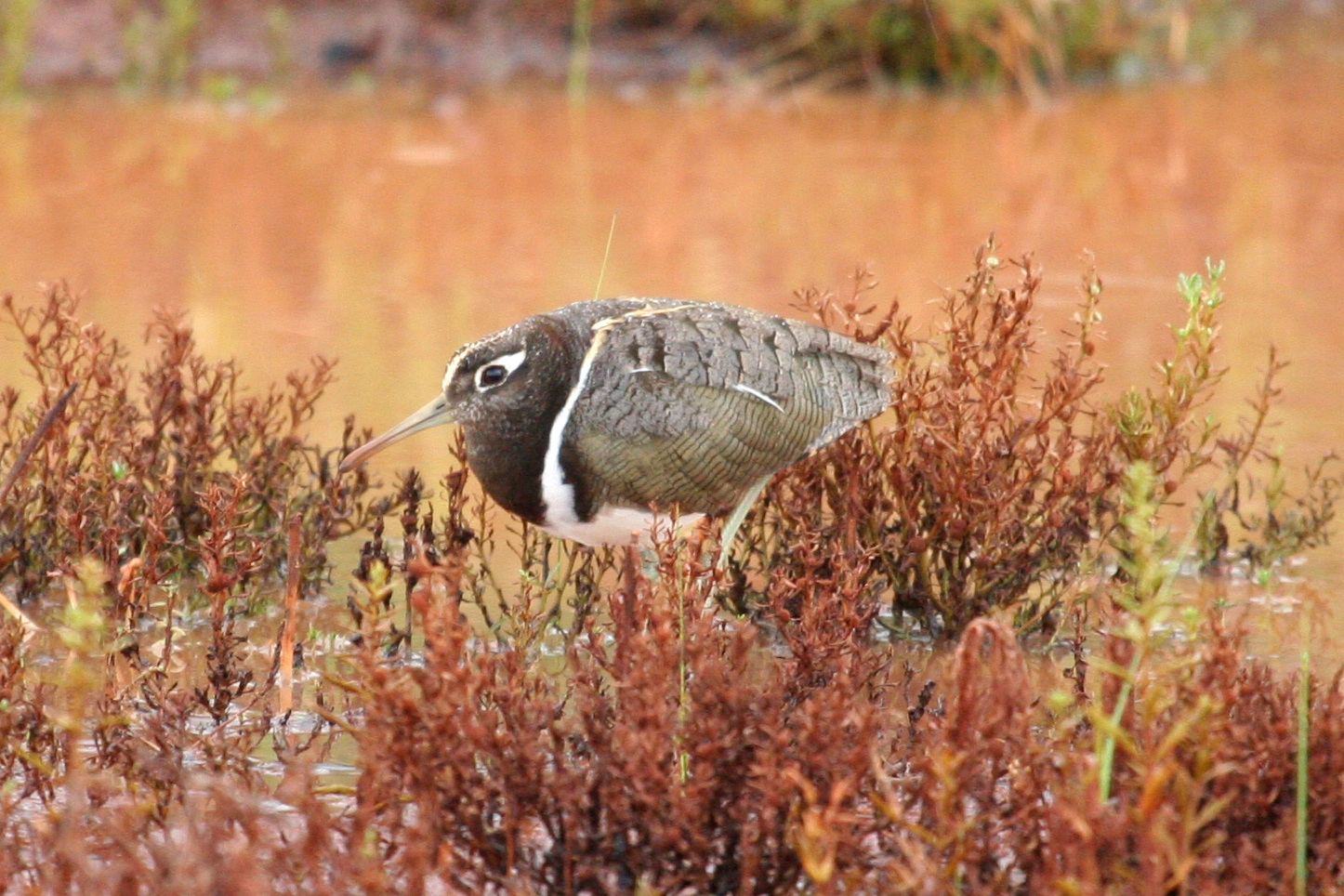Elected representatives in government are in charge of the policy and funding that can make or break saving threatened species. Their decisions and actions matter.
Cowper has or used to have 27 threatened animals within its boundaries. One of them is me, the Australian Painted Snipe.
We took care to attach appropriate images that are as close to representative of each species as our resources and the availability of images allowed. However, we could not ensure perfect accuracy in every case. Some images show species that share the same genus but not at the species or subspecies level.
Australian Painted Snipe
Rostratula australis
Status: Endangered
The Environment Protection and Biodiversity Conservation Act 1999 (EPBC Act) lists threatened species under six categories:
Extinct, Extinct in the wild, Critically Endangered, Endangered, Vulnerable, Conservation dependent. Read more about these categories
Rostratula australis is found across 145 electorates.
The Australian Painted Snipe is a stocky wading bird around 220–250 mm in length with a long pinkish bill. The adult female, more colourful than the male, has a chestnut-coloured head, with white around the eye and a white crown stripe, and metallic green back and wings, barred with black and chestnut. There is a pale stripe extending from the shoulder into a V down its upper back. The adult male is similar to the female, but is smaller and duller with buff spots on the wings and without any chestnut colouring on the head, nape or throat. This species is generally seen singly or in pairs, or less often in small flocks. Flocking occurs during the breeding season, when adults sometimes form loose gatherings around a group of nests. Flocks can also form after the breeding season, and at some locations small groups regularly occur. Groups comprising of a male and up to six offspring have been observed.¹
Explore more about this species on the Atlas of Living Australia




Explore more about the threats facing species on our Resources page.
- Scented Acronychia (Acronychia littoralis)
- Dwarf Heath Casuarina (Allocasuarina defungens)
- Allocasuarina thalassoscopica (Allocasuarina thalassoscopica)
- Hairy-joint Grass (Arthraxon hispidus)
- Trailing Woodruff (Asperula asthenes)
- Orara Boronia (Boronia umbellata)
- Callistemon pungens (Callistemon pungens)
- Glenugie Karaka (Corynocarpus rupestris subsp. rupestris)
- Leafless Tongue-orchid (Cryptostylis hunteriana)
- White-flowered Wax Plant (Cynanchum elegans)
- Bluegrass (Dichanthium setosum)
- Diuris eborensis (Diuris eborensis)
- Small Snake Orchid (Diuris pedunculata)
- Craven Grey Box (Eucalyptus largeana)
- Narrow-leaved Peppermint (Eucalyptus nicholii)
- Euphrasia arguta (Euphrasia arguta)
- Green Waxberry (Gaultheria viridicarpa)
- Mountain Angelica (Gingidia rupicola)
- Grevillea guthrieana (Grevillea guthrieana)
- Tall Velvet Sea-berry (Haloragis exalata subsp. velutina)
- Monkey Nut (Hicksbeachia pinnatifolia)
- Kardomia prominens (Kardomia prominens)
- Macadamia Nut (Macadamia integrifolia)
- Rough-shelled Bush Nut (Macadamia tetraphylla)
- Clear Milkvine (Marsdenia longiloba)
- Biconvex Paperbark (Melaleuca biconvexa)
- Neoastelia spectabilis (Neoastelia spectabilis)
- Dorrigo Daisy-bush (Olearia flocktoniae)
- Milky Silkpod (Parsonsia dorrigoensis)
- Knotweed (Persicaria elatior)
- Lesser Swamp-orchid (Phaius australis)
- Nightcap Plectranthus (Plectranthus nitidus)
- Scrub Turpentine (Rhodamnia rubescens)
- Native Guava (Rhodomyrtus psidioides)
- Samadera sp. Moonee Creek (Samadera sp. Moonee Creek )
- Ravine Orchid (Sarcochilus fitzgeraldii)
- Fragrant Pepperbush (Tasmannia glaucifolia)
- Austral Toadflax (Thesium australe)
- Triplarina imbricata (Triplarina imbricata)
- Tylophora woollsii (Tylophora woollsii)
- Willi Willi Zieria (Zieria lasiocaulis)
- Headland Zieria (Zieria prostrata)
You are in federal electorate Cowper.
